Chipper5783
Super User
I thought I'd share a brief tour of a classic little European milling machine. The sales literature refers to this as a "die sinker". I understand one of the more common brands of this configuration is made by Deckel - but there are many similar looking brands. I don't believe they are necessarily copies - other than if folks learn their craft in the same schools, on a certain type of machine, read the same books, work in similar markets - the machines that they make and use may all end up looking very similar.
This machine came from NAIT, it was in the back where students could not access it. Apparently it was for the support of the machining programs (after all, you really need a machine shop to keep a machine shop functional). Anyway I got it via one of the Alberta Government auctions. These machines typically have a dizzying array of accessories available, and this one was reasonably well dressed. While it had most of the available accessories, it had very little tooling. Although this is a 1963 machine (I understand that is about when the NAIT machining program started), tooling is still reasonably available. The spindle is a #40 taper, but it uses a S20x2 male buttress thread (quite nice as it self ejects) - which could readily be converted to conventional NMTB (which don't self eject). It has been a fun little machine to learn milling on, very versatile - the main challenge being the small work envelop, though much of the burden of a larger machine (weights ~2000#, 3 phase 575 with the typical foot print of a regular knee mill).
The machine is really intended to work from collets that pull right up inside the taper (either with an adapter or direct in the #40). The tooling took some time to acquire, and I then began seeking after additional attachments (which I didn't know I "needed" prior to getting the machine). The main result of that effort was a second machine, nearly identical to the first (1965), but came with a fixed table and the spiral milling unit. I have not cleaned up and connected the 2nd machine - but hey, if I ever needed any parts - I have a full set.
It is a very versatile machine, the set-ups can get quite complicated and while I now have other mill options, there are some tasks that this mill does better than a larger machine might. Also, it is a great conversation piece - many shop guys have never seen such a set up (seems I gravitate to the "odd and unusual").
Enjoy, David
This machine came from NAIT, it was in the back where students could not access it. Apparently it was for the support of the machining programs (after all, you really need a machine shop to keep a machine shop functional). Anyway I got it via one of the Alberta Government auctions. These machines typically have a dizzying array of accessories available, and this one was reasonably well dressed. While it had most of the available accessories, it had very little tooling. Although this is a 1963 machine (I understand that is about when the NAIT machining program started), tooling is still reasonably available. The spindle is a #40 taper, but it uses a S20x2 male buttress thread (quite nice as it self ejects) - which could readily be converted to conventional NMTB (which don't self eject). It has been a fun little machine to learn milling on, very versatile - the main challenge being the small work envelop, though much of the burden of a larger machine (weights ~2000#, 3 phase 575 with the typical foot print of a regular knee mill).
The machine is really intended to work from collets that pull right up inside the taper (either with an adapter or direct in the #40). The tooling took some time to acquire, and I then began seeking after additional attachments (which I didn't know I "needed" prior to getting the machine). The main result of that effort was a second machine, nearly identical to the first (1965), but came with a fixed table and the spiral milling unit. I have not cleaned up and connected the 2nd machine - but hey, if I ever needed any parts - I have a full set.
It is a very versatile machine, the set-ups can get quite complicated and while I now have other mill options, there are some tasks that this mill does better than a larger machine might. Also, it is a great conversation piece - many shop guys have never seen such a set up (seems I gravitate to the "odd and unusual").
Enjoy, David
Attachments
-
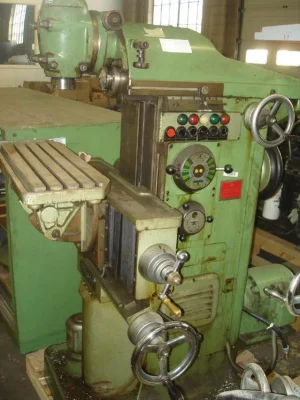 Auction site picture 1.webp75.9 KB · Views: 23
Auction site picture 1.webp75.9 KB · Views: 23 -
 Auction site picture 2.webp3.4 KB · Views: 24
Auction site picture 2.webp3.4 KB · Views: 24 -
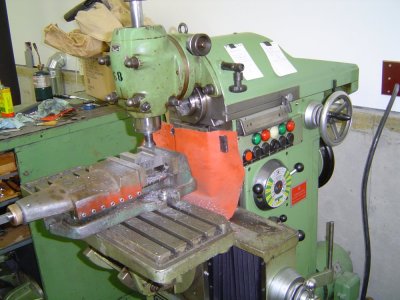 DSC02673.JPG128.9 KB · Views: 24
DSC02673.JPG128.9 KB · Views: 24 -
 DSCF2518.JPG103.7 KB · Views: 24
DSCF2518.JPG103.7 KB · Views: 24 -
 DSCF3631.JPG132.3 KB · Views: 22
DSCF3631.JPG132.3 KB · Views: 22 -
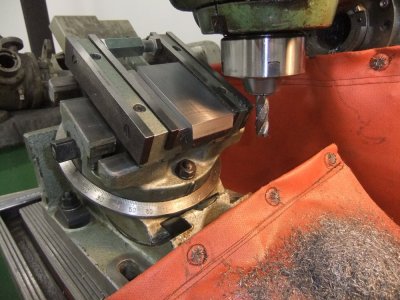 DSCF2794.JPG157.6 KB · Views: 23
DSCF2794.JPG157.6 KB · Views: 23 -
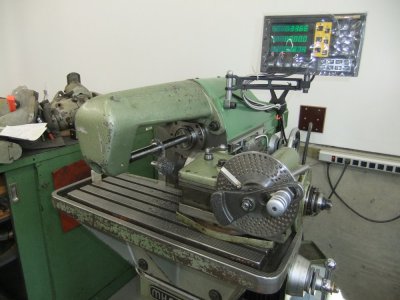 DSCF4560.JPG117.2 KB · Views: 22
DSCF4560.JPG117.2 KB · Views: 22 -
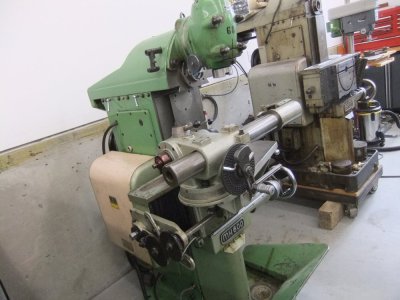 DSCF5114.JPG116.1 KB · Views: 22
DSCF5114.JPG116.1 KB · Views: 22 -
 DSCF5116.JPG110.1 KB · Views: 22
DSCF5116.JPG110.1 KB · Views: 22 -
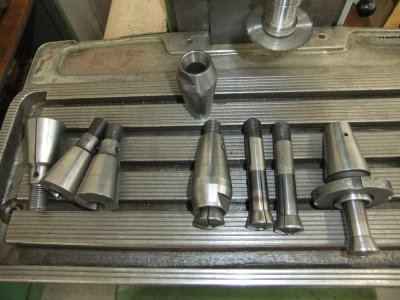 DSCF7043.JPG150.1 KB · Views: 19
DSCF7043.JPG150.1 KB · Views: 19
